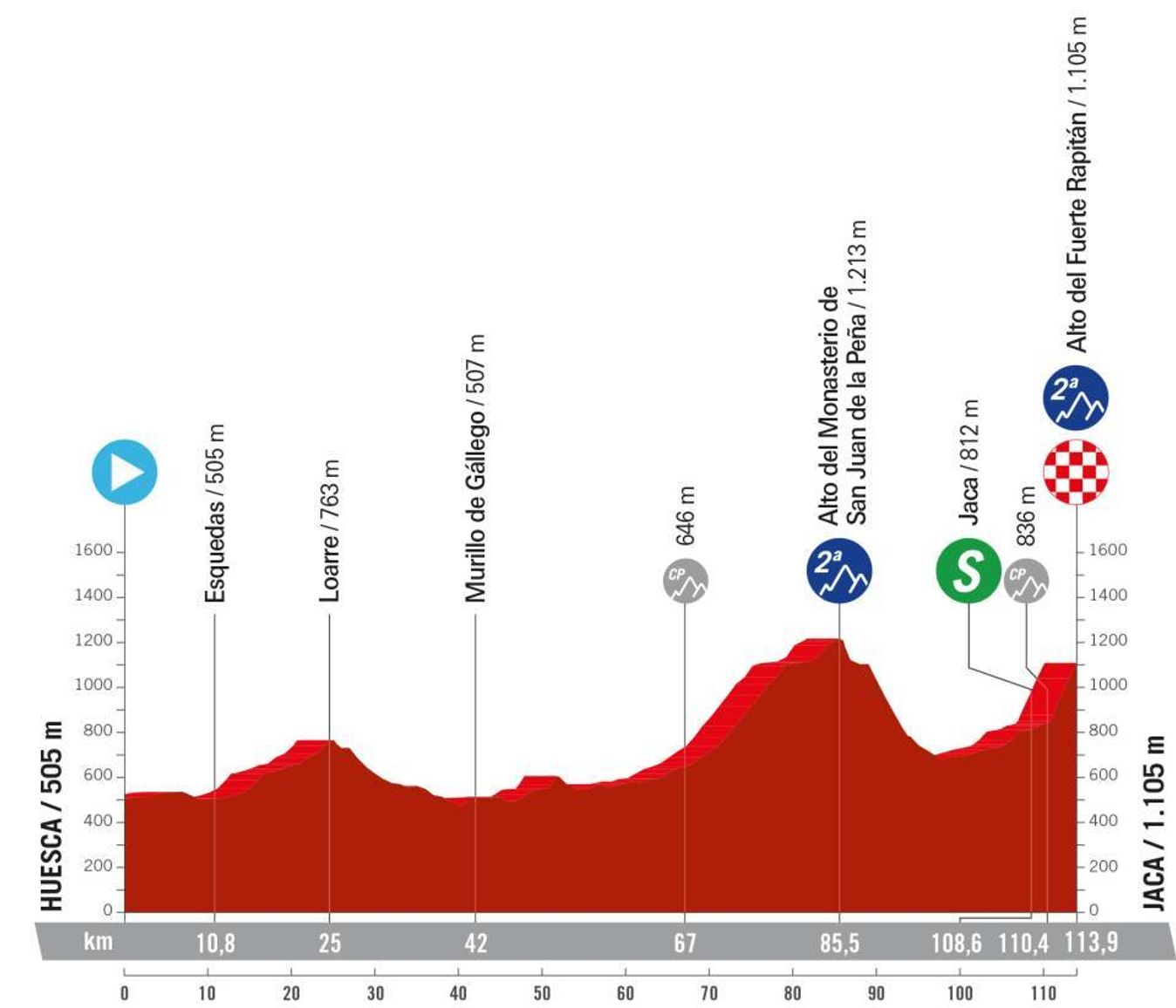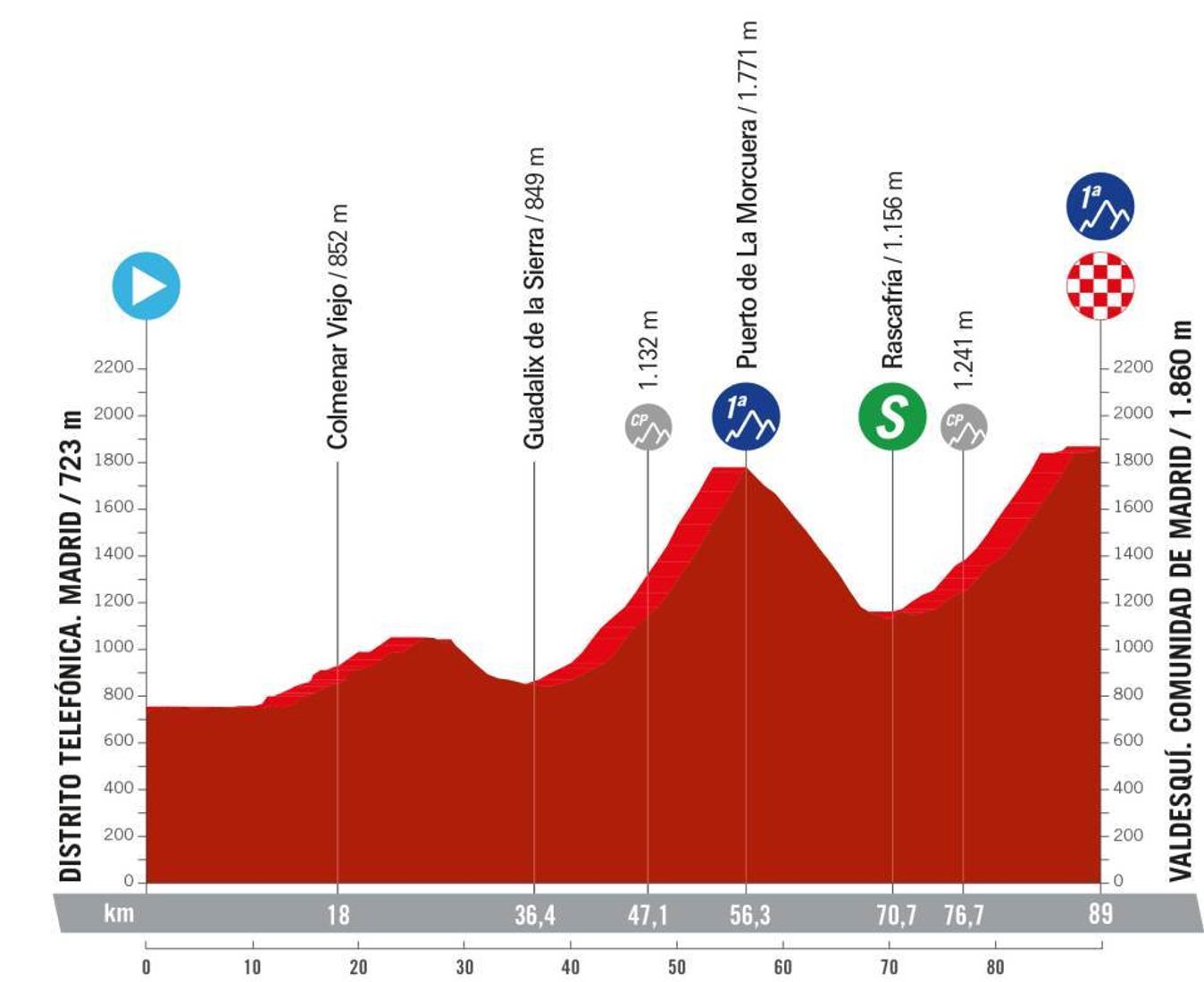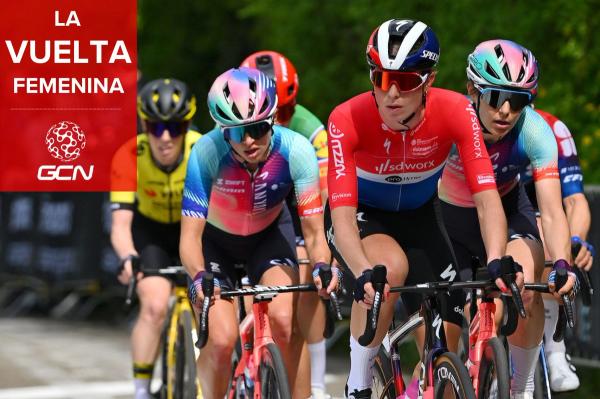Vuelta Femenina: The critical points where the race will be decided
From the opening TTT, through the windy plains, and into the mountains, we take a closer look at the key battlegrounds in the fight for the red jersey
Patrick Fletcher
Deputy Editor
© Getty Images
The climbs will be decisive again at the Vuelta Femenina
The 2024 Vuelta Femenina kicks off on Sunday 28 April with a team time trial in Valencia, and concludes on Sunday 5 May at the ski resort of Valdesqui.
The eight-stage race is bookended by stages that will first shape and then decide the general classification and the final destination of the red jersey. But there are plenty more crucial points along the way.
From that opening TTT, through the windy plains of Aragón and over the mountains that ratchet up towards that final-day showdown northwest of Madrid, we've taken a closer look at the crucial points of this year's Vuelta.
The race can, in theory, be won and lost anywhere, but these are the moments that are most obviously set to define the first Grand Tour of the season.
Read more: La Vuelta Femenina 2024 – essential race preview
The tone-setting team time trial

© ASO / Unipublic
The profile for stage 1 of the Vuelta Femenina
The big climbing tests come towards the end of the race, but we start out on flat terrain with a test that could open some significant differences from the very first day.
For the past two editions of the Vuelta, since its move to a longer format, the race has opened with a team time trial, with similar outcomes. While the gaps between first and last have been vast, the differences between the biggest teams has been limited to around 30 seconds.
In 2022, the 25 seconds Annemiek van Vleuten conceded to eventual runner-up Elisa Longo Borghini paled into insignificance as the Dutchwoman stormed away in the mountains, but she won last year’s Vuelta by just nine seconds. This year, in the absence of Van Vleuten and the faltering form of the Tour de France champion Demi Vollering, we could have an even tighter and more open race on our hands, which could emphasise the importance of any gains and losses made on this opening day.
The Valencia course is a flat 16km out-and-back, with relatively few complications, but team time trials are a rarity and any shortcomings in cohesion can have serious consequences. It may be that the top contenders end up on a relatively equal footing, but the opening TTT - in this case a flat 16km out-and-back - is a major hurdle and will at least set the hierarchy and the tone.
The windy plains of Aragón

© ASO / Unipublic
The profile for stage 4 of the Vuelta Femenina
Looking at the profile of stage 4, alarm bells do not ring. In fact, with a net elevation loss of a kilometre, this would appear to be one of the most easy-going routes you’ll find all season. However, a quick glance at the map reveals a more treacherous underbelly. Nestled between the axis of Madrid, the Pyrenees, and the northeast coast, Aragon is a barren landscape, its plains offering free rein to the so-called ‘Cierzo’ wind.
That wind produced the fastest ever Grand Tour road stage in the 2001 men’s Vuelta a España, run off at an eye-watering 55.176kph - quicker than most prologue time trials. This stage of the Vuelta Femenina shares the same finishing city of Zaragoza and if the wind follows the same direction then it will blow from the side, and the race could split into echelons.
The peloton will no doubt be on high alert throughout this stage, and indeed the night before as they anxiously check the weather forecasts. Unless it’s as calm as days come, it will be a nervy, twitchy few hours in the saddle, and if the wind is up then this unassuming stage could become action-packed and shape the entire race.
Read more: A brief history of the Vuelta Femenina
The first climbing test at Fuerte Rapitán

© ASO / Unipublic
The profile for stage 5 of the Vuelta Femenina
There’s some lumpy stuff on the first couple of road stages but it’s not until five days in that we have our first proper climbing test. While there may be sterner ones to come, this stage represents a first key head-to-head between the red jersey hopefuls.
Stage 5 is dominated by two category 2 climbs, very different in nature. The first is a long drag on a mostly modest gradient - 18.5km at 3% - and the second is much shorter and punchier - 3.4km at 7.9%. The Alto del Monasterio de San Juan de la Peña should serve to soften the legs before the dart up the Alto del Fuerte Rapitán, taking its name from the striking hilltop fort.
This climb was used in the 2012 men’s Vuelta, where Joaquím Rodríguez was pulled clear by Chris Froome before nipping around him in the final 50 metres, as Alejandro Valverde and Alberto Contador dragged themselves over the line several seconds later.
It’s an explosive effort that will likely see the main contenders on an even footing until the taps are opened closer to the line, but it still has the potential to separate out the overall contenders for the first time in direct hostility, and the red jersey could well change hands here. Even if the gaps are small, Fuerte Rapitán will still tell us something about the overall trajectory of the race.
The double digits of Laguna Negra

© ASO / Unipublic
The profile for stage 6 of the Vuelta Femenina
Straight after the finish at Fuerte Rapitán, the Vuelta doubles up with an even tougher summit finish, this time a category 1 ascent to La Laguna Negra. Translating as ‘black lake’, this is one of a number of small glacial lakes in the Picos de Urbión, one of Spain’s many mini mountain ranges.
Measuring 6.5km long at 6.8%, this is a more significant climbing proposition than the previous day’s offering. It also brings the altitude factor into play with a finish at 1,730 metres above sea level. There are no other categorised climbs on the menu, but given that the beginning of the stage is essentially uphill for 30km, this is going to be a tough day out.
If this stage is all about the final climb, then the same can be said of the climb itself. The sting is very much in the tail with this one: the final 1500 metres average close to 10% and the final 500m are at 11.2%. This is one of the super-steep bursts for the line the men’s Vuelta has become so renowned for, and fans may remember this finish from Dan Martin’s victory among the favourites in 2020 and Jesús Herrada’s triumph from the breakaway last year.
Timing and patience will be key, as action could well kick off further down the climb but gaps can yawn in those short, steep metres closer to the line.
Read more: Vuelta Femenina: Ranking the GC contenders
The mountains of Madrid

© ASO / Unipublic
The profile for stage 8 of the Vuelta Femenina
The Vuelta’s expansion last year, with its week-long slot, new format, and admission to the Grand Tour stable, came with the inclusion of a marquee mountain-top finish: Lagos de Covadonga, the most visited climb of the men’s Vuelta. There’s no such emblematic ascent this time around, and we’ll have to wait for the race to venture into the Pyrenees, but we still have a proper mountain stage to decide the race on the final day.
They may not carry the same sense of romance but the sierras to the northwest of Madrid are not to be underestimated, offering subtle but treacherous terrain that has produced more than a fair share of last-gasp drama, most notably through Pedro Delgado in 1985 and Fabio Aru in 2015. Recent visits may have failed to inspire quite such drama but this area is being positioned by the organisers as the finale for the GC battle, now in the women’s race too.
The final ascent to the ski resort of Valdesqui may be one notch down from the hors catégorie Lagos de Covadonga, but it’s one of a pair of category 1 climbs which combine to make this, overall, just as tough a proposition as 12 months ago. There’s not much space between them, so we could well see long-range fireworks, not least because the short distance of just 89km promises all-out all-day racing.
The opening climb, the Puerto de la Morcuera, is the tougher of the two on paper, measuring 9.1km at 6.8& and with a final kilometre hitting the double digits. The final climb to Valdesqui officially measures 12.8% at 4.8%, which seems like an uninspiring gradient, but it is slightly misleading. The true summit of the climb is the Puerto de Cotos, and the final 2,500 metres are simply a flat hop over to the ski resort finish area. The Cotos does start gently for 3km but then hits a much stiffer and steadier average gradient of nearly 7% for around 7km.
It’s a proper mountain stage, topping 1860m of altitude, and comfortably the hardest of the Vuelta. This is the most obviously decisive day of the whole race and, coming on the final day, will be the showpiece climax in the battle for ultimate ownership of the red jersey.
For everything you need to know about the 2024 Vuelta Femenina, from the key information to this year's route and start list, be sure to check out our dedicated race hub.






.png?w=600&auto=format)






.jpg?w=600&auto=format)
.png?w=600&auto=format)

.jpg?w=600&auto=format)